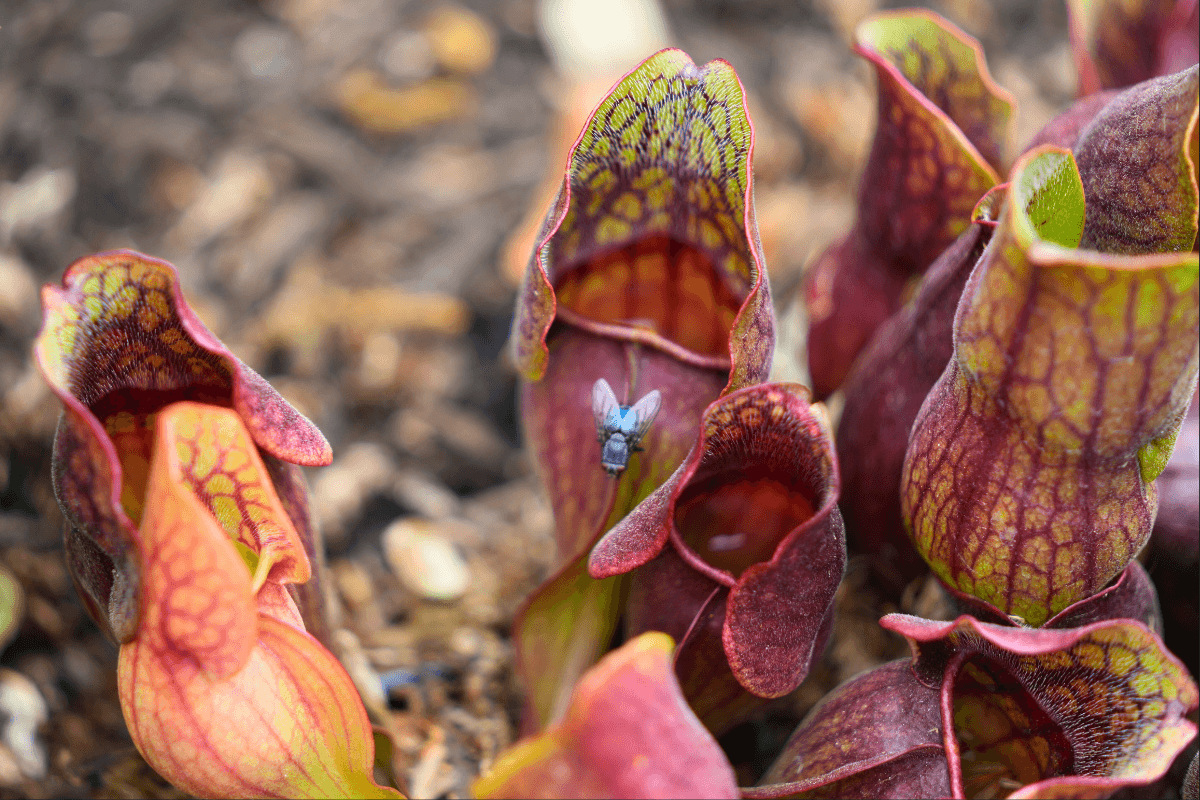This site uses cookies – Learn more.
“Gardens of Renewal” Spotlight Series: Pitcher Plants
“Gardens of Renewal” Spotlight Series: Pitcher Plants
Up next in our spotlight series is our native pitcher plant, Sarracenia purpurea, on display in Redbud Lawn, sitting snugly in sphagnum moss. Native to the peat bogs of eastern and northern North America, its bright red and green veined modified leaves draw you in, much like the effect it has on the insects it preys on. Pitcher plants are widespread in eastern North America, ranging from the Gulf Coast of the Florida panhandle to Nova Scotia and across Canada to the base of the Rocky Mountains. Carnivorous plants have evolved over millennia to draw nutrients from the insects they catch, developing traps and digestive mechanisms. This evolution comes in handy since its native habitat is swampy, nutrient-poor environments. We are thrilled to play host to these dynamic plants at Madison Square Park this summer!
Pitcher plants feed on spiders, small frogs, mites, salamanders, and flying insects. Insects are attracted to the leaves by droplets of nectar on the rim and upper portion of the leaf and water below. As the insect makes its way to the water in the lower funnel of the leaves, stiff downward-pointing internal hairs prevent them from escaping, and they eventually drown. The water collected inside of the modified leaves contains insect-digesting enzymes, breaking them down into nutrients that these plants eventually absorb. The plant is pollinated by the Pitcher Plant fly, whose larvae live in the fluid of the pitcher plant and dine on the trapped insects. The water collected in their leaves is teeming with microorganisms, which also aid in digesting any trapped insects. Surprisingly so, the insects that use this environment to complete their life cycle, including mosquitos and midges, are not affected by the enzymes, creating an efficient symbiotic relationship.
You may find these plants in open and sunny bogs, swamps, wet prairies, along streams, and alongside other carnivorous plants such as Pinguicula spp. & Drosera spp. These species depend on frequent, low-intensity fires to maintain open habitat and reduce competition. Their environment has become threatened due to draining, logging, and woody encroachment due to fire suppression. Sarracenia purpurea is currently classified as vulnerable in New York State by the US Forest Service, and endangered in Georgia, Illinois, and Michigan. This makes its presence here in the park even more significant for environmental awareness and education. We hope that when you visit the Garden of Renewal in Redbud Lawn, you take in these magnificent plants with a new understanding and appreciation.









